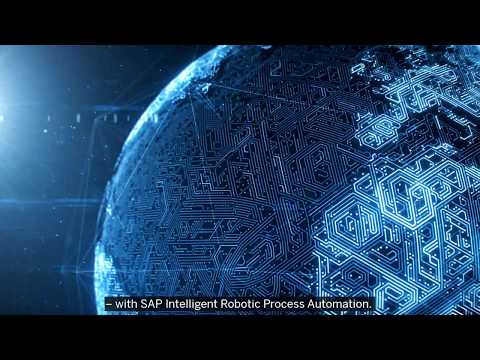Robotic processing automation (RPA) helps companies increase productivity by digitalizing areas of their business that have proven vulnerable to the crisis. Strong growth is predicted.
RPA does not stand for “recovery from pandemic aftermath,” but it could serve as an alias for the technology during the current economic downturn.
RPA is defined by IDC as a class of software designed to automate or augment repetitive tasks that require a significant manual effort. RPA mimics human-computer interactions using software scripts or robots. Although not new, it has been catapulted into the limelight by the business-process vulnerabilities that the COVID-19 pandemic exposed.
“Companies find themselves adapting faster and faster to new circumstances while trying to maintain seamless operations,” says Sebastian Schroetel, vice president of Machine Learning and Intelligent Robotic Process Automation at SAP. “RPA provides a way to manage the demand peaks, cut costs, and free up employees for higher-value tasks.”
Another example of RPA’s use during the pandemic is illustrated by the Swiss Canton of Zürich, which deployed a solution to cope with a deluge of short-time work requests. The number of requests per month exploded from around 10 to 30,000. By deploying an RPA solution, processing time per request was shortened from 25 minutes to 20 seconds.
But even beyond COVID-19 and the crisis, RPA is also viewed by some analysts as a means to counter the consistent decline in productivity growth experienced worldwide over the past decade. According to David Vellante, chief analyst at Wikibon, global challenges like climate change, global competitiveness, aging populations and infrastructure, deficits, mass immigration, sustainable food sources and healthcare all will require major investments in automation — and RPA will be on the menu.

Defying Cuts in IT Spending
Despite the depressed levels of overall tech spending forecast for 2020, Vellante is bullish on RPA for this year and beyond. “Robotic process automation solutions remain one of the most attractive investments for business technology buyers,” he wrote recently. And compared to other technology investments, he says RPA is “the enterprise software sector with the highest spending momentum — neck and neck with that of machine learning and artificial intelligence, and ahead of containers and even cloud computing.”
Similarly, IDC identified RPA as a key investment technology for the post-COVID rebound in its recent Worldwide Digital Transformation Spending Guide. One of the use cases that will see the greatest growth in spending is RPA-based claims processing in insurance.
Enterprise software providers also expect an accelerated uptake of RPA projects. Worldwide revenue from RPA in 2019 was $1.4 billion according to San Francisco-based Grand View Research, and is expected to grow between 29 and 41 percent over the coming five to seven years.
“The coronavirus pandemic has increased demand in RPA,” says Al Hilwa, senior director of AI, Machine Learning, and Platform Technology Research, SAP. “The integration of machine learning into RPA is driving many of the new investments, including more funding and acquisitions.”
Hilwa also sees a shift to RPA into the cloud on the horizon as players focus on “unattended” RPA, where robots work autonomously and predictively with human supervision only.
Rather than being applied as a standalone solution, RPA is increasingly seen as part of a spectrum of process automation tools best applied in unison, for example with business process management (BPM) and process mining.
“SAP is currently seeing major adoption of the combination of RPA and intelligent business process tools,” says Flat Chen, head of SAP Intelligent Enterprise Solutions in Asia-Pacific, and lead for the company’s RPA program in China. “They are two sides of the same coin. RPA augments BPM by letting customers combine system-to-system and human-to-system interactions within a single executable workflow.”
“Intelligent document processing is a layer that most of the RPA vendors are beginning to offer as they extend capabilities to support AI use cases,” shares Maureen Fleming, program vice president for Integration and Process Automation at IDC, who examines the products and processes used for building, integrating, and deploying applications within extended enterprise systems. “SAP has a document processing service that works with SAP Intelligent RPA and also is callable by workflow, a form, or by an integration component – and it works really well for business documents that are managed by SAP applications.”
RPA can also be combined with conversational AI technologies, which apply natural language to communicate intent and trigger actions downstream. Under the new rules of COVID-19, wherein businesses are challenged to interact physically, the need for digital customer engagement and service has been amplified.
RPA Cloud ERP Co-Innovation Project in China
SAP views RPA as an essential technology in its goal to help customers realize the power of the Intelligent Enterprise. With prescient foresight in 2019, Jan Gilg, president SAP S/4HANA, called on development teams to make bot development a priority. SAP employees based in China took on the challenge, and the fruits of their labor were recently rewarded when REHAU Polymer China went live in June with an RPA bot and machine learning. The application automated invoice processing and helped REHAU achieve higher process efficiencies.
REHAU is the first SAP S/4HANA Cloud customer in Greater China, as well as the first reference customer for SAP Intelligent RPA and intelligent technology packages that include machine learning, natural language understanding, and advanced analytics capabilities. The co-innovation project with REHAU brought together teams from across SAP: SAP S/4HANA Finance & Risk, New Ventures & Technologies, and Intelligent Delivery Group of Greater China.
To streamline and automate the financial operational process in SAP S/4HANA Cloud, project members trained a machine learning model that, when used in combination with the RPA bot, was able to achieve greater accuracy and seamless automation.
A machine learning model is only as good as the data it has been trained on and each method of training – isolated, centralized, or federated – has its own advantages and disadvantages. Certain types of data, such as transaction data, is highly sensitive and usually cannot be shared outside a company’s network for building a model, which makes it difficult to apply AI for RPA solutions.
“While training the model, we were able to keep sensitive data on the customer’s system, aggregating it in anonymous form to build a federation of data,” shares Voga Li, data scientist at SAP Labs China. “This method allowed us to achieve a higher prediction accuracy for the model.”
The REHAU project under the guidance of SAP demonstrated that federated training can be applied to datasets related to enterprise resource planning (ERP) and achieve the same or better performance as isolated and centralized training models. “We are now testing an out-of-the-box machine learning model for federated learning and are currently validating this work together with our co-innovation customers,” Li says. He attributes the success of the co-innovation project to strong leadership and open environment provided by SAP Labs China.
REHAU has been live on SAP Intelligent RPA since January 2020, having already replaced two manual processes with the combination of AI and RPA. In one solution, the company was able to reduce its monthly manual processing time of about 1,000 financial accounting documents from four days to 10 minutes. In the other, a bot that combines SAP Intelligent RPA and machine learning reads invoices, extracts the information from them, and then automatically generate payables in SAP S/4HANA Cloud. It can currently process 3,000 product invoices in roughly two minutes.
Chengbo Yu, CIO of the Asia Pacific Region for REHAU Polymer China, is satisfied with the result: “We used SAP Intelligent RPA to automate use cases that required significant manual intervention and redundant work. This saves us time and cuts down on human error, and our employees are spending more time on innovative work.”
Thanks to the following SAP employees for their support: Akie Pan, Camile Zhou, Voga Li, and Cyrano Chen from SAP Labs China; Claire Tseng and Pierre Col from New Ventures and Technologies; Sarah Harvey from Analyst Relations.



